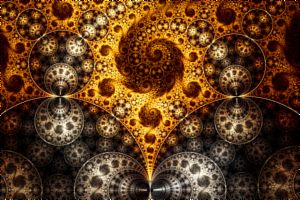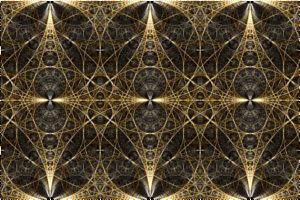
Please Note
The Fractal Science Kit fractal generator is no longer available for download
or purchase. This web site is provided for informational purposes only, and to
provide online documentation for existing Fractal Science Kit users. All
downloadable products have been removed and the purchase page disabled.
I continue to license fractal images for commercial use and I would be happy to
work with you to license any of my fractal images. I can provide you with large,
high quality image files to your specifications. Contact me at
rj.hilbert@verizon.net for details.
In addition to the images found here, check out some of my latest images on
deviantART,
Facebook, and
Flickr.
Ross Hilbert
rj.hilbert@verizon.net
Fractal Science Kit Examples
A set of example fractal properties files can be downloaded to get you started. The download contains the fractal properties files that I used to generate the images in the Fractal Image Gallery. You can use these files as a starting point for your own explorations.
To view a short video of several of the Fractal Science Kit examples set to music, click Fractal Beat.
Important: These examples require version 1.23 (or later) of the Fractal Science Kit fractal generator. Please visit Download the Fractal Science Kit to download the latest version.
The Fractal Science Kit examples have been tested on Microsoft Windows XP Service Pack 2, Windows Vista, Windows 7, Windows 8, and Windows 10. Earlier versions of the Windows operating system may work, but I cannot attest to that at this time.
Use the link below to download the Fractal Science Kit examples to your computer:
Fractal Science Kit Examples 1.13 released on 03/17/2014
Windows XP
When you click the above link, a dialog is displayed that asks you what you want to do with the zip file and has 3 buttons Open, Save, and Cancel. You should click Save and the Save As dialog will be displayed to allow you to download the zip file on your computer. Choose a folder to download the file to, and then click Save to begin the download.
Windows Vista, Windows 7, or Windows 8
When you click the above link, a dialog is displayed that asks you what you want to do with the zip file and has 3 buttons Open, Save, and Save As. You should click Save As and the Save As dialog will be displayed to allow you to download the zip file on your computer. Choose a folder to download the file to, and then click Save to begin the download.
Windows 10
When you click the above link from Microsoft Edge, the zip file will automatically download to your machine.
To install the Fractal Science Kit examples, do the following:
Windows XP
-
Download the examples using the above link. The examples are distributed as a zip file fskex.zip.
-
Unzip the file fskex.zip. Select the file fskex.zip, right-click on the selected file, and execute the Extract All... command on the popup menu to unzip the file. On the Extraction Wizard, click Next twice, and then check Show extracted files and click Finish. This creates a folder named fskex in the same folder as the zip file. You can remove fskex.zip now if you want to.
-
Move the folder Examples (found in the fskex folder) into your My Files folder (found in the folder Fractal Science Kit 1.0).
Windows Vista, Windows 7, or Windows 8
-
Download the examples using the above link. The examples are distributed as a zip file fskex.zip.
-
Unzip the file fskex.zip. Select the file fskex.zip, right-click on the selected file, and execute the Extract All... command on the popup menu to unzip the file. On the resulting dialog, check Show extracted files when complete and click Extract. This creates a folder named fskex in the same folder as the zip file. You can remove fskex.zip now if you want to.
-
Move the folder Examples (found in the fskex folder) into your My Files folder (found in the folder Fractal Science Kit 1.0).
Step 3 above is important because several of the examples reference texture files found in the folder Examples\Textures under the My Files folder and they will not display properly if the textures are not found in that location. In truth, you can place the example files anywhere you wish as long as you copy the textures found in the distribution into a folder named Examples\Textures under the My Files folder (i.e., Fractal Science Kit 1.0\My Files\Examples\Textures). See Texture Support below.
Windows 10
-
Download the examples using the above link. The examples are distributed as a zip file fskex.zip.
-
After the file is finished downloading, open the folder fskex by clicking Open at the bottom of the window. You will find 1 folder: Examples.
-
Click Extract at the top of the window.
-
Click Extract all on the right side of the window.
-
Click Browse on the resulting dialog and navigate to and select your My Files folder (found in the folder Fractal Science Kit 1.0).
-
Click Extract to extract the examples to the folder Examples in your My Files folder.
Important
The descriptions in the following sections are not as detailed as those in the Tutorials and I recommend that you work through the Tutorials first so that you have a basic understanding of the application windows and the properties page hierarchy. At a minimum, you should read the 1st page of the Tutorials which contains a few concepts necessary to work with the examples which I do not cover here.
Commercial use of the images found here requires a license. I would be happy to work with you to license any of the images, and can provide you with large, high quality image files to your specifications. Contact me at rj.hilbert@verizon.net for details.
If you would like to purchase a print of any of these images, I have a RedBubble gallery where large, high quality renders of many of these images can be found. If the image you are interested in is not found there, contact me at rj.hilbert@verizon.net and I will add it to the RedBubble gallery.
Fractal Science Kit Example Index
The set of images below are a sampling of the examples found in the download. Each image represents a set of examples that you can view by clicking on the image. This will take you to a page that describes the set of examples and gives you a few pointers specific to the set. Make sure to read the sections following this one, beginning with the Fractal Science Kit Examples Overview, for tips on how to best use the examples.
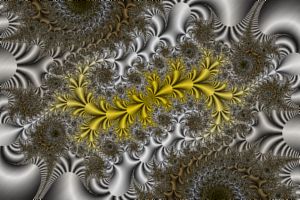 |
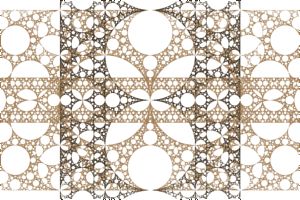 |
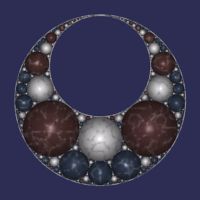 |
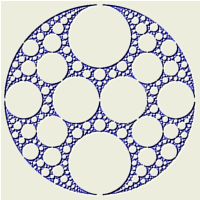 |
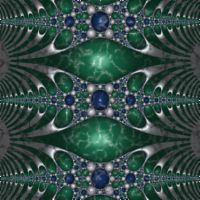 |
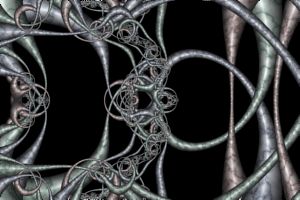 |
 |
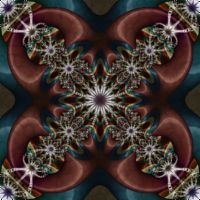 |
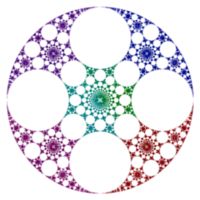 |
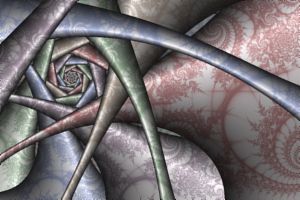 |
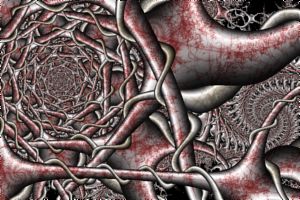 |
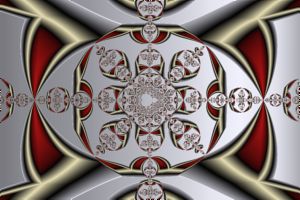 |
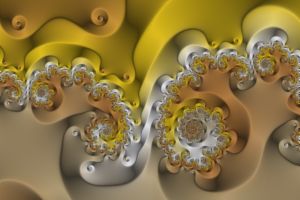 |
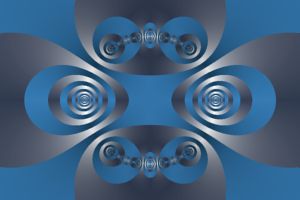 |
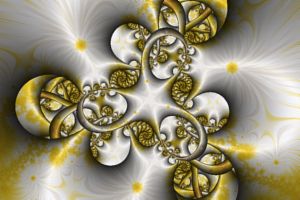 |
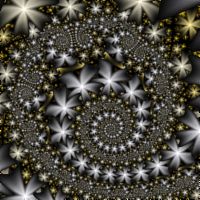 |
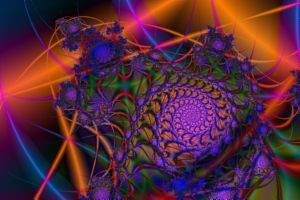 |
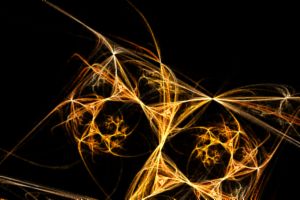 |
 |
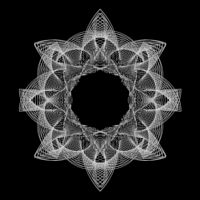 |
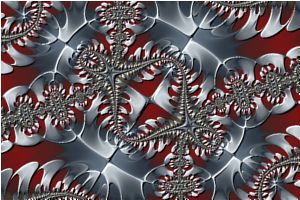 |
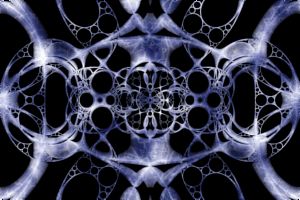 |
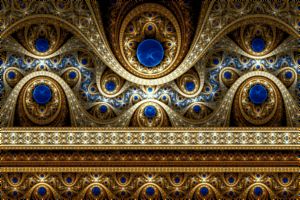 |
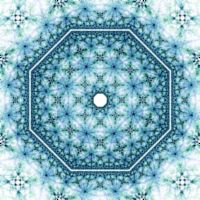 |
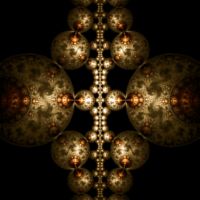 |
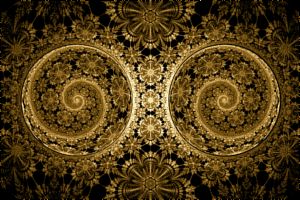 |
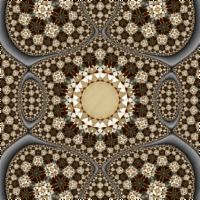 |
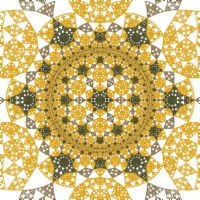 |
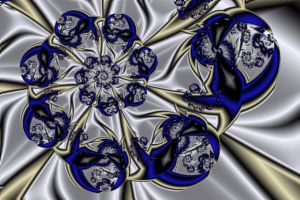 |
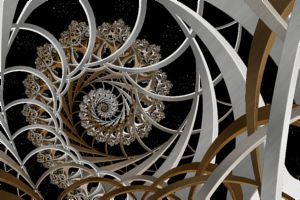 |
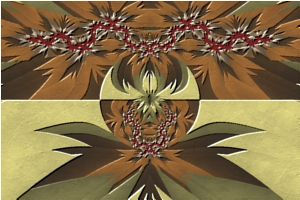 |
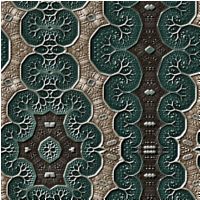 |
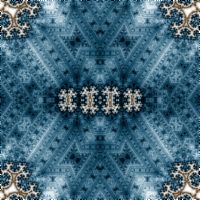 |
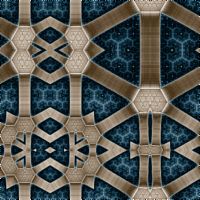 |
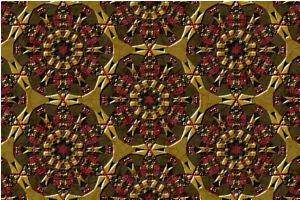 |
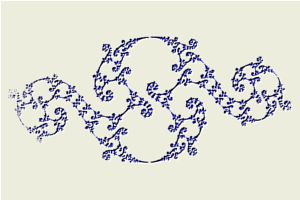 |
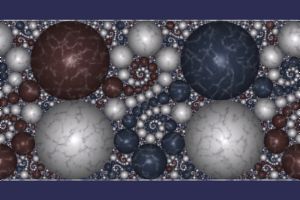 |
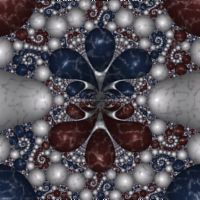 |
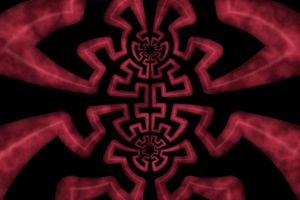 |
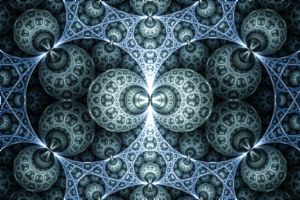 |
||
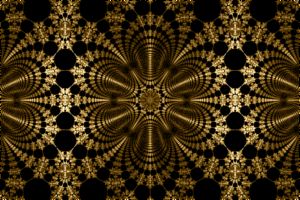 |
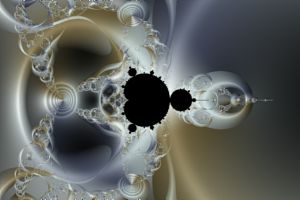 |
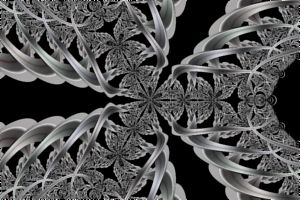 |
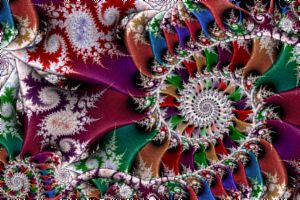 |
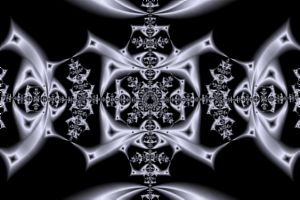 |
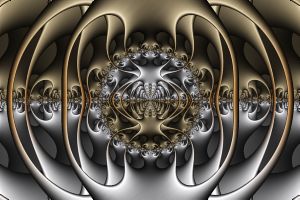 |
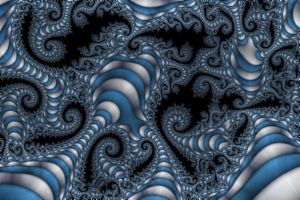 |
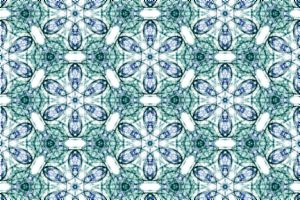 |
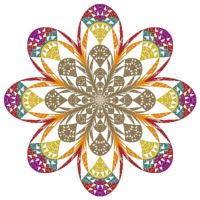 |
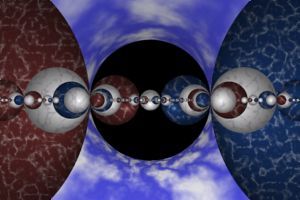 |
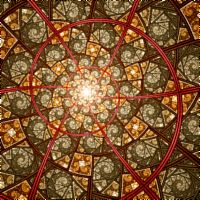 |
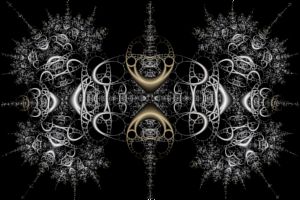 |
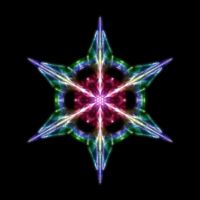 |
|
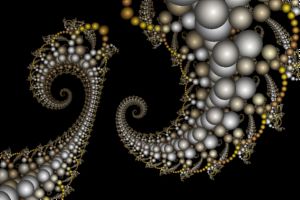 |
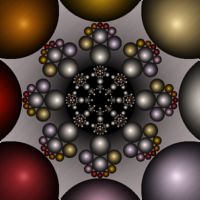 |
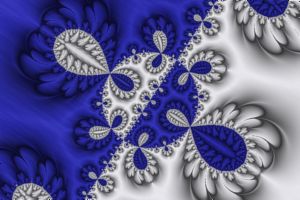 |
The following sections provide instructions on how to use the fractal examples as a starting point for your own explorations.
Fractal Science Kit Examples Overview
The fractal examples consist of over 650 of the best fractals that I have found during my recent explorations divided into several groups.
The examples are distributed as a set of Fractal Science Kit properties files and a set of small fractal images. Each example consists of the fractal properties file used to generate the example, and a small image of the fractal, so you can see what the fractal looks like. Also included is a Readme file that lists the fractal properties files, along with the name of the image given in the Fractal Image Gallery.
The Fractal Science Kit properties files hold all the fractal properties that define a fractal, and are saved as XML files.
After the examples are installed, you can open them by executing the Open File command on the File menu of the Fractal Window (or click on the Open File toolbar icon).
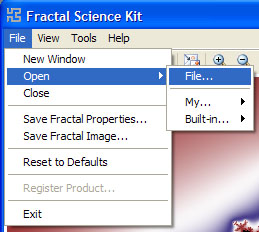
When the Open File dialog is displayed, open the folder containing the example files, select one of the examples, and click Open to load the file. A message box is displayed to ask if you want to replace the properties in the existing window or open a new window. Click Yes to replace the properties in the existing window. To generate the fractal image, execute the Display Fractal command on the Tools menu.
I recommend the following steps when working with the Fractal Science Kit examples:
Step 1: Choose a file to work with.
The first thing you need to do, is to choose a properties file to work with. Included in the download are a set of small images, one image for each of the properties files. The image files have the same name as the corresponding properties file, but have a different extension; i.e., the properties files end in .xml and the image files have the .jpg extension. You can look through the images to find one that you like, and then open the corresponding properties file to work with the fractal.
Step 2: Reduce the image size and/or quality settings.
Each of the properties files is configured to produce a large, high-quality image, and it may take several minutes to generate the fractal. Before experimenting with different property settings (see Step 3 below), I recommend that you reduce the size of the fractal image and/or reduce the quality settings, so that the fractal generation is fast, and you can try out different property settings and quickly see your results.
Reducing the image size
The processing time and memory allocation associated with a fractal, is proportional to the size of the resulting fractal image, so you can both increase the speed, and decrease the required memory, by resizing the image to a smaller size.

The Image Viewport section of the General page of the Properties Window contains the Image Width and Image Height properties which control the size of the image.
The example images are one of 3 sizes:
- 1050 x 700
- 700 x 1050
- 900 x 900
If you reduce the size, it is best to keep the ratio of Image Width to Image Height the same as in the original example. An example sized 1050 x 700, can be resized 900 x 600, 750 x 500, or 600 x 400, for example, to maintain the proper ratio. You can check Check to constrain aspect ratio to enforce this.
Reducing the image quality settings
The processing time and memory allocation associated with a fractal, also depends on 1 or more properties that control the quality of the resulting fractal image, and reducing these quality settings can dramatically decrease the time required to generate the fractal image. The way you reduce the quality settings depends, in large part, on the type of fractal you are working with, so you must first determine the fractal type, and then reduce the quality settings as appropriate for that type.
The Fractal Type property on the General page of the Properties Window gives the fractal type.

The 3 choices for Fractal Type are:
- Mandelbrot / Julia / Newton
- Orbital / IFS / Strange Attractor
- L-System
If you have not done so already, you should read the high-level summary of each of these types on the following pages:
After you identify the type of fractal you are working with, you can follow the steps in the appropriate section below to reduce the quality settings.
Mandelbrot / Julia / Newton Fractals
If the fractal is a Mandelbrot / Julia / Newton fractal, you should turn off Anti-Aliasing. The Anti-Aliasing properties are found on the General page of the Properties Window, and in most of the examples, Oversampling is set to 3x3 Oversampling.

To turn off Anti-Aliasing, set the Oversampling to <None>.
In most cases, this change alone will dramatically improve performance by a factor of 10 or more.
Orbital / IFS / Strange Attractor Fractals
If the fractal is an Orbital / IFS / Strange Attractor fractal, Anti-Aliasing should NOT be turned off. Since Orbital Fractals do not generate an orbit per sample as do Mandelbrot fractals, anti-aliasing does not result in as severe a time penalty as with Mandelbrot fractals, and it is recommended that you set Oversampling to one of the higher settings when exploring Orbital fractals since the increased quality outweighs the cost. For Orbital / IFS / Strange Attractor fractals, I recommend that you reduce the Oversampling to 2x2 Oversampling. Changing the Oversampling from 3x3 Oversampling to 2x2 Oversampling, for example, would cut both the time and memory required to generate the fractal by about 50%.
The most effective way to improve performance when working with Orbital / IFS / Strange Attractor fractals, is to reduce the Max Count property found in the Orbital / IFS / Strange Attractor section on the Orbital / IFS / Strange Attractor page.

For example, changing the Max Count from 10 to 1 will reduce the time required to generate the fractal by a factor of 10. Of course, the resulting image will not be as well defined and some parts may be hard to see. Try to set Max Count to the smallest value that still allows you to see the basic structure of the fractal. Later, when you want to generate your final image, you can increase Max Count to improve the image quality. As you explore (see Step 3 below), you may need to increase Max Count if the image becomes too light to see clearly.
Finally, some of the examples use Adaptive Smoothing to improve grainy or speckled images that can result when generating many Orbital Fractals. Adaptive Smoothing attempts to improve the results by blurring the image using a low-pass filter. This processing takes time and you should turn off Adaptive Smoothing until you are ready to generate your final image.

To turn off Adaptive Smoothing, uncheck the Active checkbox on the Adaptive Smoothing page.
L-System Fractals
When the fractal is an L-System fractal, you should turn off Anti-Aliasing; i.e. set the Oversampling to <None>.
Step 3: Explore.
Now you are ready to explore. This step can take several different forms:
-
Zoom In or Zoom Out to examine different parts of the fractal. Execute the Home command on the View menu of the Fractal Window to reset the fractal to the default position/magnification, and then Zoom In to other areas. When you are working with Mandelbrot / Julia / Newton fractals, you may need to increase the Max Dwell property as you Zoom In if the image loses its fine structure at higher magnifications. The Max Dwell property is found in the Orbit Generation section or in the Orbit Trap Orbit Generation section if the fractal is based on an Orbit Trap. When you are working with Orbital / IFS / Strange Attractor fractals, you will need to increase the Max Count property as you Zoom In if the image is hard to discern. The Max Count property is found in the Orbital / IFS / Strange Attractor section.
-
If the fractal is a Mandelbrot Fractal, you can use the Preview Julia command to explore the Mandelbrot's many different Julia Fractals. This is a common technique that can be used to generate lots of different Julia fractals from a single Mandelbrot image. See the section Preview Julia Support for details.
-
If the fractal is a Julia Fractal, you can open the Fractal Equation page, uncheck the Julia checkbox, execute the Home command on the View menu of the Fractal Window to reset the Mandelbrot fractal to the default position/magnification, and use the Preview Julia command to explore the Mandelbrot's many different Julia Fractals. This is a common technique that can be used to generate lots of different Julia fractals from a single Mandelbrot image and is, in all likelihood, the method I used to find the fractal in the first place! This works great with Orbit Trap based Julia Fractals too. See the section Working with Julia Fractals for details. Alternatively, you can change the Julia Constant property on the Fractal Equation page, and then click the Preview Fractal toolbar button on the Properties Window to generate a preview of your change in the Preview Window.
-
If the fractal is based on 1 or more Orbit Traps, you can change each trap's size, position, and other properties found on the orbit trap's properties page (found below the trap in the page hierarchy). These changes can have a dramatic effect on the resulting image. If the resulting image is too dense, try reducing the trap's line width and/or size. If the image is too sparse, try increasing the trap's line width and/or size. See Orbit Trap Map for details on selecting the set of orbit traps, and for information on the other orbit trap properties.
-
Add a Transformation (or replace/modify/remove the existing transformation, if present). This is a common way to generate countless different images from the same fractal equation. Try out any/all of the available transformations and don't forget that most transformations have several properties you can adjust to obtain different results. Execute the Home command on the View menu of the Fractal Window to reset the fractal to the default position/magnification before you adjust the transformation. Then change the transformation and Zoom In to interesting areas of the transformed image. See Transformation Support for addition details.
-
Add a Symmetry Transformation (or replace/modify/remove the existing symmetry transformation, if present). A Symmetry Transformation can be applied to an Orbit Trap or an Orbital Fractal. Note that many of the Orbital Fractal examples use a symmetry transformation to improve performance. If an Orbital Fractal has rotational symmetry, for example, you can add a symmetry transformation to inject matching rotational symmetry into the image and this will improve the performance without altering the fractal image. Alternatively, you can inject symmetry into an image where none exists to change the image dramatically. You can experiment with the different symmetry transformations to generate many variations of the fractal image, and don't forget that most symmetry transformations have several properties you can adjust to obtain different results.
-
Adjust the properties of the Fractal Equation or Orbital Equation. Navigate to the properties page for the equation (found under the equation in the page hierarchy) and play with the different properties found there. Many of the equations support properties that can be used to generate lots of different variations.
-
Try a different Fractal Equation or Orbital Equation. Open the Fractal Equation or Orbital Equation page, change the Based On property to one of the other equations, execute the Home command on the View menu of the Fractal Window to reset the fractal to the default position/magnification, and then Zoom In to other areas. Remember to play with the different properties found on the equation's properties page too.
-
Play with the built-in properties found on the many other properties pages that define the fractal.
Step 4: Increase the quality settings.
Once you find an image you wish to save, you should undo the changes you made in Step 2; i.e., you can increase the image size and change the fractal properties to generate a high-quality image. High-quality images take longer to generate than do lower quality images, so it is best to wait until you find an image you wish to save, and then change the properties that affect the quality just before generating your final image, so that you only incur the additional cost when necessary.
See Generating High-Quality Images for details.
Step 5: Play with coloring.
At this point, I like to play with the image coloring. The Fractal Science Kit only regenerates the fractal data if you change a property that affects the fractal data, and the properties on the Color Controllers do not. Consequently, you can make changes on the Color Controllers, and you will only need to remap the data to the image, which takes a reasonably short amount of time compared to the actual fractal data generation. So you can change any of the controller's properties and/or gradients, or use a different controller/gradient altogether, and incur only the cost of remapping the data to the image. Other properties that do not affect the fractal data generation, include data normalization, background color settings, embossing, image smoothing/sharpening, border coloring, and adaptive smoothing.
Many of the Color Controllers supply a list of gradients that you can use. Remember that you can change any of the gradients in the list or add additional gradients to the list, to take complete control over the colors applied to the fractal image. Your changes will not affect the built-in Color Controllers, so freely experiment. And if you have any gradients produced by other fractal programs, you may be able to load them into the Fractal Science Kit to use with your Fractal Science Kit based fractals. See Gradients for details.
Step 6: Save your fractal.
When you get the image just the way you like it, you can save the fractal properties file (see Save Fractal Properties) and/or the fractal image (see Save Fractal Image).
Final words
Here are a few additional things to remember as you explore:
-
The Preview Fractal toolbar button on the Properties Window generates a preview (in the Preview Window) of the fractal that would result if you were to execute the Display Fractal command on the associated Fractal Window. This is useful when you have made 1 or more changes to the properties and want a quick look at the effects of those changes without incurring the cost of redisplaying the fractal in the full window. I use this feature all the time and so should you! The Preview Fractal command is also available on the Tools menu of the associated Fractal Window. If you like what you see, click on the image in the Preview Window, and a new Fractal Window will open with a full-sized version of the preview. See Preview Fractal and Preview Window for details.
-
When you are about to Zoom In or Zoom Out and you want to preserve the current fractal, you can set up the Zoom In/Zoom Out box and then execute the Display Fractal in New Window command on the Tools menu of the Fractal Window. This generates a new Fractal Window based on the current values of all the properties associated with the existing Fractal Window and the zoom is applied to the new Fractal Window. This allows you to Zoom In to several different areas of the same base image.
-
When you click on the fractal image in the Fractal Window, information with respect to the sample point on which you clicked is displayed in the Information Window. Click on Information Window on the View menu on the Fractal Window to view this information. This information is very useful when you are setting up the Color Controllers for a fractal in that you can click on different parts of the fractal and examine the data associated with the different points to guide your decisions with respect to mapping the data to color. For example, an orbit trap may assign different index values to different parts of the trap and you can use this to map different colors to the different parts. By clicking on the trap you can examine which parts have which index values to assist in the index to color mapping.
-
The Open Documentation toolbar button opens the documentation in your browser to the page that describes the window or the currently selected properties page on the Properties Window. The Open Documentation toolbar button is a small round blue button with a question mark in the center and is the right-most toolbar button on most windows. Those windows that do not have the Open Documentation toolbar button usually have a Help button for this purpose. This is a great way to learn about the Fractal Science Kit features that are not covered by the Tutorials.
-
When you are experimenting with a Fractal Equation, Orbital Equation, Transformation, or Color Controller, you should read the comments at the top of the program listing for hints and other information related to the program in question. The program listing is at the bottom of the Properties Page and you may need to scroll down to see it. The Color Controllers have lots of properties that can get in the way when you are trying to read the program comments, so I usually click the Toggle Code View toolbar button on the Properties Window to hide the properties so I can read the comments.
Properties Pages
The Properties Window is used to access the Properties Pages associated with a fractal. There is a separate Properties Window for each Fractal Window. To view the Properties Pages for the fractal, open the Properties Window by executing the Properties Window command on the View menu.

After making changes to 1 or more Properties Pages, you can view the resulting fractal image by executing the Display Fractal command on the Tools menu.

Typically, you will open the Properties Window, make changes to 1 or more Properties Pages, and generate a new fractal image by executing the Display Fractal command on the Tools menu of the Fractal Window. Then you can make additional changes to the Properties Pages, generate a new fractal image, and so on. If you see something interesting along the way, you can Zoom In to see more detail, or enable high-quality image processing to generate an image to save.
Note that you can save some time by executing the Preview Fractal command on the Tools menu of the Fractal Window (or by clicking the Preview Fractal button on the Properties Window toolbar) prior to executing the Display Fractal command. The Preview Fractal command generates a small preview of the fractal (in the Preview Window). If you like the preview, you can click on the image in the Preview Window and a new Fractal Window will open with a full-sized version of the preview. If you don't like the preview, you can move on without incurring the cost of displaying the full-sized image.
Working with Julia Fractals
If the fractal you are working with is a Julia Fractal, or an Orbit Trap based on a Julia Fractal, you can generate lots of different Julia fractals using a Mandelbrot fractal based on the same equation. In fact, this is how I discovered almost all of the Julia fractals found in these examples.
To generate a Julia Fractal you need to define an arbitrary point on the complex plane called the Julia Constant. The choice of the Julia Constant, in large part, controls the character of the resulting Julia fractal. Surprisingly, the Mandelbrot fractal for the same fractal formula provides the best interface for choosing the Julia Constant. It turns out that the best choice for a Julia Constant is a point on the complex plane near the Mandelbrot set boundary. The resulting Julia fractal will have many of the characteristics of the Mandelbrot fractal in the neighborhood of the Julia Constant. The Mandelbrot fractal can be used as a map for choosing the Julia Constant. To this end, the Fractal Science Kit allows you to click on any Mandelbrot fractal to produce a Julia fractal in a small window called the Preview Window. Clicking on the image displayed in the Preview Window causes the Julia fractal to be displayed in a full size window for further exploration.
Follow the steps below when the fractal you are working with is a Julia Fractal.
Open the Fractal Equation page:
General
Mandelbrot / Julia /
Newton
Fractal Equation
Uncheck the Julia checkbox in the Properties section:
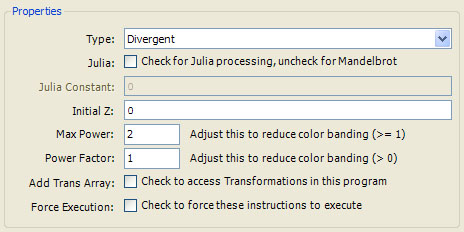
This changes the Julia fractal to a Mandelbrot fractal based on the same equation as the Julia fractal.
Next, execute the Home command on the View menu of the Fractal Window to reset the Mandelbrot fractal to the default position/magnification, and then follow the instructions given in the next section (Preview Julia Support) for details on how to use the Preview Julia command to explore the Mandelbrot's many different Julia Fractals.
This is a common technique that can be used to generate lots of different Julia fractals from a single Mandelbrot image and is, in all likelihood, the method I used to find the original Julia fractal in the first place!
To fine tune the Julia Constant, you can open the Fractal Equation page for the Julia Fractal you are working with, and adjust the Julia Constant property in the above dialog.
Preview Julia Support
If the fractal you are working with is a Mandelbrot Fractal, or an Orbit Trap based on a Mandelbrot Fractal, you can use the Preview Julia command to explore the Mandelbrot's associated Julia Fractals. This is accomplished by selecting the Preview Julia item on the Tools menu of the Fractal Window.

When you select this item (or press the Preview Julia toolbar button), the Fractal Science Kit changes the cursor to a cross and places the Fractal Window into a state where clicking on the Mandelbrot fractal generates a Julia Fractal preview in the Preview Window. The point on the Mandelbrot fractal where you click is used as the Julia Constant for the preview. There is a single Preview Window shared by all windows and each click on the Mandelbrot image generates a new Julia fractal preview, replacing any image currently in the Preview Window. If you wish to cancel the operation, simply select the menu item or toolbar button again. While you are in this state, the Preview Julia menu item has a check next to it and the Preview Julia toolbar button is depressed. The Preview Julia menu item is disabled if the fractal is not a Mandelbrot fractal.
Try clicking at various points on the Mandelbrot fractal and view the resulting Julia fractals. The Julia fractal will be quite different depending on the characteristics of the point you click on. If you like the Julia preview, you can click on the image in the Preview Window and a new Fractal Window will open with a full-sized version of the preview.
If the example fractal you are working with is a Julia Fractal, you can open the Fractal Equation page, uncheck the Julia checkbox, execute the Home command on the View menu of the Fractal Window to reset the Mandelbrot fractal to the default position/magnification, and then use the Preview Julia command to explore the Mandelbrot's many different Julia Fractals. This is a common technique that can be used to generate lots of different Julia fractals from a single Mandelbrot image and is, in all likelihood, the method I used to find the fractal in the first place! See Working with Julia Fractals for details.
Transformation Support
A common way to change the appearance of a fractal is to apply a transformation to the fractal. Transformations are programs that map every point on the complex plane to a different point on the complex plane. This usually results in a dramatically different image.
There are several pages in the properties page hierarchy where transformations are defined. These pages are usually named Transformation, Transformation 1, or Transformation 2. This organization allows you to control where the transformation is applied; e.g., prior to the orbit, within the orbit just before processing each orbit point, or after processing the symmetry transformation (if any).
Many of the fractal examples use the Composite Function transformation since it is flexible, efficient, and easy to use. This transformation allows you to define a transformation based on a composite of 2 complex functions. It is always a good transformation to try first.
There are lots of other transformations that you can use as well. Most transformations are based on a mathematical function or process and may have strange/unfamiliar names (unless you are a mathematician!), but they are all easy to use; just select the transformation, open the transformation's properties page (found under the transformation in the page hierarchy), and play with the transformation's properties. Generate a new fractal image by executing the Display Fractal command on the Tools menu of the Fractal Window, or click the Preview Fractal toolbar button on the Properties Window to generate a preview of the fractal (in the Preview Window).
It may be necessary to execute the Home command on the View menu of the Fractal Window to reset the fractal to the default position/magnification before you adjust the transformation. Then change the transformation and Zoom In to interesting areas of the transformed image.
You can apply multiple transformations to a fractal by adding additional transformations into the Transformation Array. The transformations are applied in series; i.e., the input point is transformed by the 1st transformation in the list and the resulting point is passed to the 2nd transformation, and so on. You can add/delete transformations in the list, and order the transformations, using the Transformation List Control. See Transformation Array for details.
There is no right or wrong way to use a transformation. Experimentation is the key to good results. It is true that some of the transformations are specialized programs useful only in certain situations. This is discussed in the comment section in the program's instructions. You can read the program comments or simply try to use the transformation and if it doesn't produce good results, try another one!
Note that the default setting for many of the built-in transformations, results in the identity transformation (which does nothing) so you will need to select the properties page found under the transformation and change the properties found there for the best results.
Texture Support
Several of the examples use textures to enhance the quality of the resulting fractal image. The textures included in these examples were generated using Genetica Viewer by Spiral Graphics. Genetica Viewer is a free application for rendering seamless textures that were created in Genetica. I highly recommend that you download Genetica Viewer. The download includes hundreds of seamless textures plus editing functionality to generate countless different variations of each texture.
Genetica Viewer is not required to view/execute the examples since I include the small set of textures required by the example programs in the distribution. However, if you want to use additional textures in your explorations, you will need to get them from somewhere, and I feel that Genetica Viewer is one of the best sources for seamless textures available.
There is also a nice set of public domain textures found at Public Domain Textures.
It is important that the textures included in the examples distribution be located in a folder named Examples under the My Files folder. The reason this is required is that several of the examples reference textures found in the folder Examples\Textures under the My Files folder and they will not display properly if the textures are not found in that location.
Generating High-Quality Images
The fractal examples are configured for generating large, high-quality images. High-quality images take longer to generate than do lower quality images, so it is best to experiment with lower quality property settings until you find an image you wish to save, and then change the properties that affect the quality just before generating your final image so that you only incur the additional cost when necessary.
The most important property with respect to quality is Anti-Aliasing. Anti-Aliasing is a method used to improve the quality of the fractal image by oversampling the fractal and then averaging the results.
When working with a Mandelbrot / Julia / Newton fractal, you will normally have Oversampling set to <None> and you should increase Oversampling to 2x2 Oversampling or 3x3 Oversampling when you produce the final image.

This improves the quality of the resulting image but dramatically increases the space required for sample data and the time required to compute it. Note that 3x3 Oversampling is over twice as costly as 2x2 Oversampling so plan accordingly.
When working with an Orbital / IFS / Strange Attractor fractal, Anti-Aliasing should NOT be turned off. Since Orbital Fractals do not generate an orbit per sample as do Mandelbrot fractals, anti-aliasing does not result in as severe a time penalty as with Mandelbrot fractals, and it is recommended that you set Oversampling to one of the higher settings when exploring Orbital fractals since the increased quality outweighs the cost. When you are ready to produce the final image, I recommend you set Oversampling to 3x3 Oversampling.
Another way to improve the quality of the fractal is to modify the properties that control the orbit generation. For Mandelbrot / Julia / Newton fractals, the Orbit Generation properties (and Orbit Trap Orbit Generation properties for orbit trap based fractals) control the orbit generation process. Normally, the property settings in the examples are fine unless you zoom way into the fractal. In that case, you may need to increase Max Dwell to improve the quality near the Mandelbrot set boundary. If the area near the boundary of a Mandelbrot / Julia / Newton fractal seems imprecise, try increasing the value of the Max Dwell property.
For Orbital / IFS / Strange Attractor, the Orbital / IFS / Strange Attractor properties control the orbit generation process. Typically, you will need to increase Max Count to increase the density of the samples if the Orbital Fractal image appears too sparse, too dark, or too grainy. It is best to explore with Max Count set to 1 or 2 (sometimes larger values are required) and then increase Max Count to 20 or 30 or more for the final image.
Finally, when working with Orbital Fractals, you can try activating Adaptive Smoothing. This can sometimes improve an image that appears grainy or speckled.
